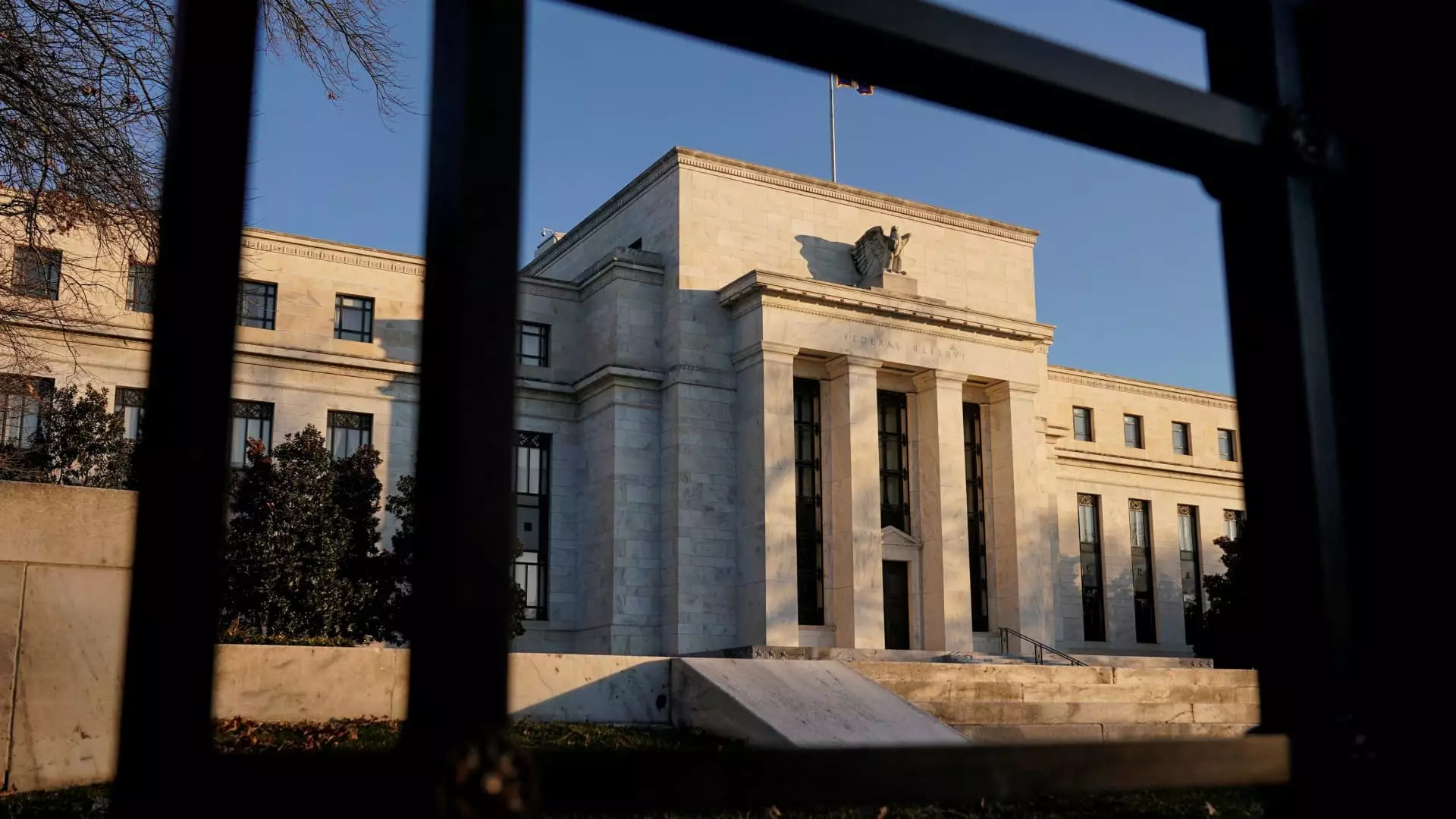In a time when the economy is expected to exhibit robust growth, the Federal Reserve made the surprising announcement that it will maintain its current interest rates. This decision, which might appear prudent to some, masks a plethora of underlying issues, primarily stemming from President Donald Trump’s aggressive tariff policies. These policies, designed to bolster domestic manufacturing, have inadvertently introduced unprecedented economic uncertainty, making growth seem more elusive than ever.
Take, for example, Bret House, an esteemed professor at Columbia Business School, who highlights that tariffs on essential materials like aluminum and steel are preventing growth in multiple sectors. These seemingly localized increases eventually create a domino effect, resulting in heightened prices for everyday goods. It raises the question: Is the cost-benefit analysis of targeted tariffs worth the strain they place on the American economy? Critics argue that the tariffs, meant to shield American jobs, could instead quash consumer spending by raising overall prices, wielding more harm than good.
Inflation Dynamics: A Bipolar Landscape
While the inflation rate may have receded recently, the threat posed by escalating trade conflicts is ever-present. National Economic Council director Kevin Hassett candidly addressed the looming uncertainties tied to the United States’ tariff agenda. With fear permeating the market landscape, the Fed has effectively shifted into a reactive mode, caught in a “wait-and-see” pattern that undermines both consumer confidence and economic initiatives.
This reluctance to raise interest rates may appear to be a protective measure, yet it reflects an underlying fragility within the economy. For the average American family, the consequences manifest in palpable pressure on household budgets. While lower rates may seem like a glimmer of hope for those wishing to purchase homes or vehicles, the paradox lies in the fact that while borrowing becomes cheaper, the goods themselves are becoming increasingly expensive due to tariff-induced inflation. With this irony, one wonders whether lower interest rates can genuinely lead to economic revitalization when the costs of basic living have risen so significantly.
Credit Cards: A Double-Edged Sword
The current state of credit cards serves as a stark illustration of this monetary quandary. As interest rates for credit loans edge ever so slightly lower—from an all-time high earlier this year—it provides relief for consumers, yet still fails to alleviate the pressure brought on by commodity inflation. Reports indicate that average credit card interest rates have dipped marginally but remain stubbornly elevated, hovering around 20.09%. Based on Bankrate’s findings, one has to ask: Is it truly beneficial if consumers face declining rates while fundamental economic conditions remain adverse?
Experts such as Greg McBride spotlight two key facets: while deferred borrowing costs offer a temporary respite, the relentless economic headwinds from tariffs and rising prices press down on consumer spending power. It’s a conundrum. On the one hand, you have a modestly improving borrowing landscape, and on the other, an insatiable spike in consumer goods. The hope of lower rates for homeowners or car buyers pales in comparison to the overwhelming reality of diminishing purchasing power.
The Implications of Mortgage Rates: A Delicate Balance
Mortgage rates have also followed this downward trajectory, driven largely by fears of economic stability. As of mid-March, new figures indicate a 30-year fixed-rate mortgage at 6.78%, revealing a decline that could hint at positive movement for prospective homeowners. Yet, while the numbers provide a tantalizing glimpse of opportunity, McBride warns that the increasing concerns about economic frailty do not bode well for a sustainable housing market recovery.
It is vital to understand why lower rates have not catalyzed a rebirth in the housing sector as many might imagine. Real estate appreciates not merely through decreased borrowing costs, but on the expectation of broader economic health. Concerns about high prices and inflation-induced depreciation reinforce the pessimistic environment, wrenching the housing industry from its typical responsive mode to one of caution and restraint.
Auto Loans: A Deteriorating Landscape
As it stands, auto loans echo much of the credit climate’s struggles. The average rate for a five-year new car loan currently sits at 7.2%, with used car loans not too far behind at 11.3%. Although these rates have lessened somewhat since their peaks, the realities of trade policies have left car prices rising sharply. As manufacturers grapple with increased costs, consumers are left wondering if they can afford to keep pace with the changing landscape of the auto industry.
A society that prioritizes the ownership of automobiles as a rite of passage now faces a troubling paradox. While auto loan terms may appear enticing on paper, consumers must grapple with the genuine implications of escalating vehicle costs due to tariffs. The conflict paints an alarming picture: economic incentives crumble under the weight of domestic policy decisions that seem to favor short-term goals over long-term growth strategies.
Through the entanglement of economic indicators, borrowing rates, and consumer sentiment, it becomes increasingly evident that the Federal Reserve’s cautious stance is part of a larger tapestry woven into the complexities of contemporary economic policies. The path ahead is fraught with challenges, and it beckons a reconsideration of fiscal tactics if we aim to navigate this turbulent economic sea.

